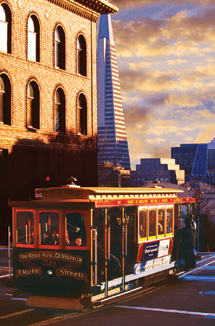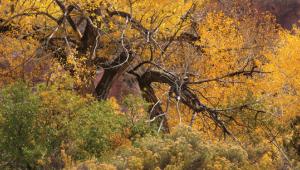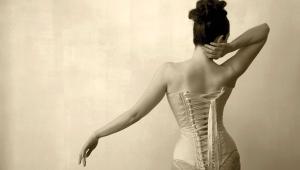Pro Talk; Mitchell Funk: Cityscapes
The personal project always finds you. It's never the other way around.
We can't remember a pro shooter ever saying anything along the lines of,
"I went looking for a labor of love." Maybe it's a subject
you've been doing for years and suddenly realize how much you enjoy doing
it. Or maybe you decide it's time to bring it to a wider audience.
And there's always one other thing: After the guidelines, deadlines, and
bottom lines of all the assignments for all the clients, this one's for
you.
 |
|
|
For commercial and editorial photographer Mitchell Funk the project is to
capture the character of two cities, New York and San Francisco.
New York is his home, and it's been the resonant subject or unique backdrop
for countless images he's taken for advertising, editorial illustration,
and stock, as well as for how-to articles on color photography for every major
photo publication.
San Francisco, on the other hand, took a while to pull him in. "I started
photographing there in the Seventies, when I was on assignments for annual reports,"
Mitchell says. "It was interesting, but it didn't captivate me right
off. But I went back in the Eighties on an ad assignment, and on some downtime
I was walking around and noticed how funky some of the less-traveled areas of
the city were. In the early Nineties I started making two trips a year for two
weeks at a time, so I'd have time to really work the city."
In both cities Mitchell needs as much time as he can get. He rarely finds the
photograph on the first visit to any location. "I scout around, find an
area that I like, that I think will work, then I come back, again and again,
waiting for the light to be right--or the right person to show up. I'll
come back five, 10, 15, even 20 times to find the perfect light." The
result of his efforts and his skill is the powerful combination of subtlety
and strength that only the best color photographers achieve.
 |
His cities project is a bit of a race against time--to get the pictures
that preserve the character of the cities before almost everything is reduced
to high-rise condos and office buildings, parking garages, fast-food restaurants,
and blocks of outdoor shopping malls.
Ironically, often it's an instance of transition that makes the best photograph.
"About 10 years ago, when they were turning 42nd Street into Disneyland,
they boarded up all the porn shops and old movie theatres with these brightly
colored metal doors and wood panels," Mitchell says. "I saw it from
the backseat of a cab, and I thought, I gotta get back here. I have to shoot
that." It took him a dozen visits to get the right light--and a break
in the traffic.
Mitchell's goal is two books, one for each city, and because the publishing
business today requires a lot more than showing up with an idea and a handful
of photographs, he's designing and producing sample layouts and will be
making the rounds of publishers to show them exactly what he's got in
mind. "It's my style that will carry the concept of the books,"
he says, "and that's hard to sell without clearly showing what the
pages are going to look like. You have to convince a publisher that the package
is cohesive, that the photos work together. And you have to print up a sample,
something tangible for them to see and hold.
"You know what it comes down to? I've got to try to knock their
eyes out with the way I see things."
Mitchell Funk is a NikonNet "Legends Behind the Lens" featured photographer. The current "Legends" story and an archive of profiled photographers, including Mitchell, can be found at www.nikonnet.com. Mitchell's website is www.mitchellfunk.com.
- Log in or register to post comments

















































